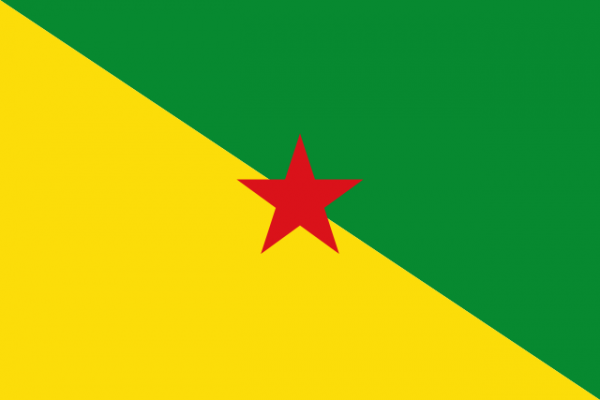
Is it Spain, or Italy, or Belgium? Could the border with Switzerland be deceptively long? For anyone who is even vaguely acquainted with YPT you will know this is a kind of trick question. Long story short, it’s Brazil! But before we get to that…
France has land borders with eleven countries. On its eastern border its neighbours include Belgium (652-659 kms), Luxembourg (73 kms), Germany (448 kms), Switzerland (573 kms), Italy (515 kms) and the principality of Monaco (4kms).
On its southern border it lies next to Spain (623 kms) and the Pyrenean mini-state of Andorra (57 kms).
What you think of as France, the large western European country with a large island in the Mediterranean Sea, is officially referred to as “Metropolitan France”, but through quirks of history and politics France is actually much more than that.
French Overseas Departments
The first quirk to mention is that contrary to your expectations France actually shares a border with the Netherlands (13 kms) on the island of Saint Martin east of Puerto Rico in the Caribbean Sea. The northern half is owned by France and known as Saint-Martin and the southern half is owned by the Netherlands and known as Sint Maarten.
And then there’s French Guiana, the largest of France’s remaining overseas departments by far. Here France shares a border with Suriname (520 kms) and Brazil (730 kms).
So there you go, France’s longest border is shared with Brazil!
What is an Overseas Department?
Now you may think the title of this blog was more than a trick question, it’s downright silly. But actually that’s not the case. France’s overseas departments are almost fully integrated into France proper, and thus the European Union. In French Guiana on the northern border of Brazil, the official currency is therefore the euro.
Overseas departments are represented in French politics with proportionate numbers of delegates sent to the National Assembly, Senate and of course the European Parliament. As a ‘department’, these French Guiana is as much a part of France as Dordogne, Metropolitan Lyon or of course Paris.
French colonialism worked on the basis of incorporating the disparate parts of the world that they conquered into France proper. This is in contrast to the British Empire, which ran its colonies through governors and separated the ideas of Great Britain and Northern Ireland proper with the various colonial parts of the empire.
In France’s former colonies, many were controlled as incorporated territories of the French Republic, such as Tunisia and Morocco, Mali and Senegal, and of course French Indochina. But some, such as Haiti and the Dominican Republic, Mauritius and the Seychelles, were made into departments.
Algeria too, the jewel in the crown of colonial France, was divided into departments since 1848, either incorporated fully or with the goal of complete incorporation sometime in the future. Algeria of course remained a French colony until it won its independence through bloody war in 1962.





